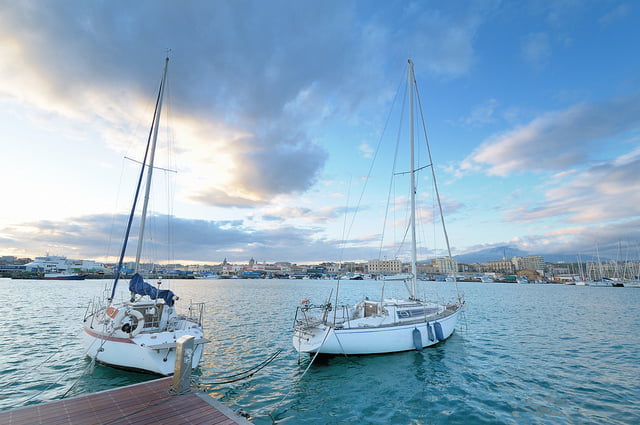Are you wondering what to bring when traveling to Italy? As you prepare for your trip to this beautiful country, it’s essential to consider the weather, cultural aspects, and practical necessities. Italy is a popular travel destination known for its rich history, stunning architecture, delicious cuisine, and breathtaking landscapes. From the bustling streets of Rome to the picturesque canals of Venice and the rolling hills of Tuscany, Italy offers a diverse and captivating experience for travelers.
With its Mediterranean climate, Italy experiences hot summers and mild winters. The seasonal variations in weather can have a significant impact on what you should pack for your trip. It’s important to pack lightweight clothing for the summer months and layer up with sweaters and jackets for the cooler seasons. Additionally, considering the cultural norms in Italy is crucial when selecting appropriate attire.
Once you’ve considered the weather and cultural aspects, it’s time to think about personal care items, footwear, electronics, travel documents, language resources, and souvenirs. Planning ahead will ensure that you are well-prepared for an unforgettable journey through one of Europe’s most enchanting destinations.
Weather and Seasonal Considerations
Italy experiences a diverse climate with a mix of Mediterranean and continental influences, resulting in distinct seasons that can greatly impact what you should bring when traveling to the country. Understanding the weather and seasonal considerations will help you pack appropriately for your trip to Italy.
Spring
Springtime in Italy, from April to June, brings mild temperatures and colorful landscapes. It is a popular time to visit as the tourist crowds are not yet at their peak. Pack lightweight clothing such as t-shirts, blouses, and light jackets for cooler evenings. You may also want to bring an umbrella or rain jacket as showers are common during this season.
Summer
Summer in Italy, from June to August, is characterized by hot and sunny weather. Lightweight, breathable clothing such as shorts, dresses, and sandals are essential for staying cool and comfortable. Don’t forget to pack sunscreen, sunglasses, and a hat to protect yourself from the strong Mediterranean sun.
Fall
Autumn in Italy starts in September and lasts through November. The weather during this season is still relatively warm but can become cooler towards the end of November. Layering is key during this time, so pack a mix of short-sleeved shirts and long-sleeved options along with a light jacket or sweater for chilly evenings.
Understanding the different seasons in Italy will help you prepare for your trip with the appropriate clothing and accessories based on the weather conditions you’re likely to encounter. Whether you’re visiting historical landmarks in Rome or exploring the picturesque countryside in Tuscany, being well-prepared will enhance your travel experience.
Clothing and Accessories
When traveling to Italy, it’s important to pack clothing and accessories that are suitable for the country’s climate and culture. Italy has a diverse climate, with the north experiencing colder temperatures in the winter and the south enjoying warmer weather all year round. It’s essential to consider the season of your trip when deciding what to bring.
Seasonal Considerations
During the summer months, lightweight and breathable clothing is essential, as temperatures can soar, especially in southern regions. Light cotton or linen fabrics are ideal for staying cool while exploring cities like Rome or Florence. In contrast, cooler weather in the fall and winter means packing layers such as sweaters, jackets, and scarves. These versatile pieces will keep you warm during chilly evenings and brisk mornings.
Cultural Considerations
When it comes to clothing choices, it’s also important to consider Italian cultural norms. Many churches and religious sites have dress codes that require visitors to cover their shoulders and knees. To respect these guidelines, consider bringing a shawl or cardigan to cover up when visiting such locations. Additionally, Italians tend to dress more formally than people in other countries, so packing smart-casual clothing for dining out or attending cultural events is recommended.
Regardless of the season or cultural considerations, comfortable walking shoes are a must-have item when visiting Italy. Whether it’s navigating the cobblestone streets of Venice or exploring ancient ruins in Pompeii, a sturdy pair of walking shoes will ensure you stay comfortable throughout your travels. Remember these tips on what to bring when traveling to Italy so you can make the most out of your adventure.
Footwear
When traveling to Italy, one of the most important considerations is footwear. Whether you plan to explore the cobblestone streets of the historic cities or venture into the picturesque countryside, having the right shoes can make all the difference in your comfort and enjoyment during your trip.
To navigate the uneven surfaces of Italy’s charming cobblestone streets, it’s essential to bring comfortable and sturdy footwear. Opt for closed-toe shoes that provide ample support and cushioning, such as sneakers, walking shoes, or comfortable sandals with straps. Avoid high heels or flimsy flip-flops, as they can be difficult to walk in and may not provide enough stability on the uneven terrain.
If you plan to venture into Italy’s stunning countryside or take scenic hikes, consider packing a pair of lightweight hiking boots or trail shoes. These will offer greater ankle support and traction on various terrains, ensuring that you can explore Italy’s natural beauty with ease and comfort.
In addition to comfortable walking shoes, it’s also a good idea to bring a pair of dressier shoes for evenings out or visits to more formal establishments. A versatile pair of flats or low-heeled boots will complement your wardrobe while still providing comfort for walking. No matter where your Italian adventure takes you, choosing appropriate footwear is crucial for a pleasant and enjoyable travel experience.
Personal Care Items
When preparing for a trip to Italy, it’s important to be mindful of the personal care items you’ll need to bring. The Italian climate can vary depending on the season and location, so it’s essential to pack items that will help protect you from the sun, insects, and any specific medical needs.
Here are some essential personal care items to consider packing when traveling to Italy:
- Sunscreen: Italy is known for its beautiful Mediterranean beaches and sunny weather. Be sure to pack sunscreen with a high SPF to protect your skin from the sun’s rays.
- Insect repellent: Especially during the warmer months, mosquitoes and other biting insects can be prevalent in certain areas of Italy. Packing insect repellent can help keep those pesky bugs at bay.
- Medications: If you have any specific medications that you rely on, be sure to pack an ample supply for your trip. It’s also a good idea to carry a copy of your prescription in case you need to refill any medications while in Italy.
In addition to these items, it’s also advisable to bring along other personal care essentials such as hand sanitizer, wet wipes, and any toiletries you may need during your travels. By being well-prepared with these personal care items, you can ensure a comfortable and enjoyable trip while exploring all that Italy has to offer.
Electronics and Travel Adapters
When packing for a trip to Italy, it’s important to consider the electronics you will need in order to stay connected and capture memories during your travels. Here are some tips on what electronics to bring and information on the type of power outlets and adapters used in Italy:
Electronics to Bring:
- Smartphone: A smartphone is essential for staying connected, navigating using maps, and capturing photos and videos of your Italian adventure.
- Camera: If you’re a photography enthusiast, bringing a camera with you is a great way to capture high-quality images of Italy’s beautiful landscapes and iconic landmarks.
- Tablet or Laptop: Depending on your needs, bringing a tablet or laptop can be useful for accessing travel information, entertainment, or keeping in touch with friends and family.
Power Outlets and Adapters:
– In Italy, the standard voltage is 230 V and the standard frequency is 50 Hz. The power outlets are Type F, which are also compatible with Type C plugs. If you’re traveling from a country with different plug types, make sure to bring a suitable adapter so that you can charge your devices.
Travel Adapter Options:
There are various universal travel adapters available that can accommodate different plug types. It’s recommended to invest in a quality universal adapter that can work in multiple countries if you’re planning on doing more international travel in the future.
By considering these tips on what electronics to bring and understanding the power outlets and adapters used in Italy, you’ll be well-equipped to stay connected and make the most of your trip. Now all that’s left is to pack your bags and get ready for an amazing Italian adventure.
Travel Documents and Money
Traveling to Italy requires careful preparation, especially when it comes to important travel documents and managing money. The most crucial item you’ll need is a valid passport that doesn’t expire for at least six months after your planned departure from Italy. If you plan on driving in Italy, an International Driving Permit is also necessary. Additionally, travel insurance is highly recommended to cover any unexpected emergencies or medical expenses during your trip.
When it comes to managing money while in Italy, it’s essential to bring a combination of cash and cards. While major credit cards are widely accepted in larger cities and tourist areas, having some euros on hand will be beneficial when venturing off the beaten path or visiting smaller towns. ATM machines are readily available, so using your debit card to withdraw euros as needed is convenient and often has better exchange rates than currency exchange services.
It’s also wise to inform your bank about your travel plans before departing for Italy. This can prevent any issues with using your credit or debit cards abroad and lower the risk of them being flagged for fraudulent activity. Finally, consider carrying a money belt or neck pouch to keep your cash, cards, and important documents safe from pickpockets while sightseeing in crowded areas.
| Travel Documents | Money Management |
|---|---|
| Valid passport | Combination of cash and cards |
| International Driving Permit | Informing bank about travel plans |
| Travel insurance | Money belt or neck pouch |
Language and Guidebooks
When traveling to Italy, it is essential to have some grasp of the Italian language or at least some basic phrases to help you communicate with the locals. While English is widely spoken in tourist areas, having some knowledge of Italian can greatly enhance your travel experience.
Consider packing a phrasebook or language guide to help you navigate through interactions such as ordering food, asking for directions, or making purchases. There are also numerous language learning apps available that are convenient for travelers who want to learn on-the-go.
In addition to language resources, guidebooks are indispensable when exploring Italy. They provide valuable information on historical sites, cultural landmarks, and off-the-beaten-path attractions. Guidebooks also include practical tips such as public transportation options, restaurant recommendations, and local customs. Look for guidebooks with maps and comprehensive city guides to make the most out of your travel experience in Italy.
Another useful resource for travelers is online travel forums and communities where you can ask for advice from experienced travelers or locals. These platforms can offer insights into specific regions of Italy and provide valuable tips that may not be found in traditional guidebooks. Connecting with other travelers before your trip can also provide a sense of camaraderie and shared excitement about your upcoming journey to Italy.
Souvenirs and Gifts
In conclusion, when traveling to Italy, it is important to consider the various aspects of your trip and plan accordingly. The country’s diverse climate and cultural offerings make it a popular destination year-round, so packing the right clothing and accessories for each season is essential. Comfortable footwear is also a must, especially for exploring cobblestone streets and historic sites.
Additionally, making sure you have essential personal care items such as sunscreen and insect repellent can make your trip more enjoyable. It’s also important to be prepared with the right electronics and travel adapters, as well as have all necessary travel documents in order.
Language resources and guidebooks can be incredibly helpful for navigating Italy, while considering souvenirs and gifts can enhance your experience by allowing you to bring a piece of Italy home with you or share it with loved ones.
Overall, planning ahead and being mindful of what to bring when traveling to Italy will ensure that you have a memorable and enjoyable experience in this beautiful country. Buon viaggio.
Frequently Asked Questions
What Are Must Haves When Traveling to Italy?
When traveling to Italy, some must-haves include comfortable shoes for all the walking you’ll do, a good camera to capture the beautiful sights, a travel adapter for your electronics, and of course, an Italian phrasebook or language app to help you communicate.
What Am I Forgetting to Pack for Italy?
It’s easy to forget some important items when packing for Italy. Many people forget to pack a reusable water bottle for staying hydrated while exploring. Additionally, don’t forget sunscreen for those sunny days and a hat to protect yourself from the sun.
Should You Bring Toilet Paper to Italy?
While most public places in Italy provide toilet paper, it’s always a good idea to carry some with you just in case of emergency situations. It can be especially handy when using public restrooms or while traveling in more rural areas where supplies may not be readily available.

I’m a passionate traveler, writer, and Italophile. My fascination with Italy’s history, art, and culture has led me on countless adventures across the Italian landscape. Through “I Live Italy,” I share my love for this extraordinary country and aims to inspire others to explore its boundless beauty.





